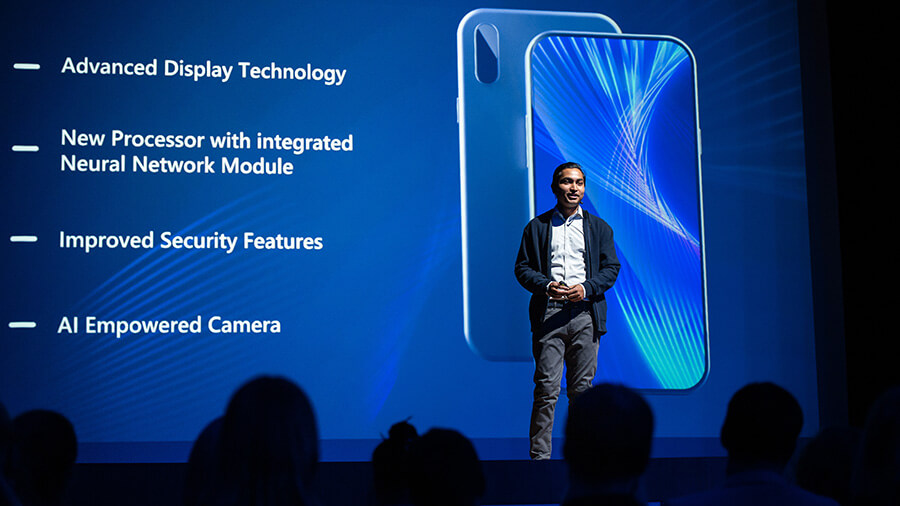
Presentations are meant to inform, inspire, and persuade audiences. Building a presentation slide deck can be frustrating to say the least. Especially for non design people. Not only is there many content things to consider, there is the whole thing of putting it all together. At the same time, it must look good, and communicate your ideas and message. A good presentation is where your audience is really engaged, and learning stuff. Here are some design and content secrets that will greatly help your presentations.
1. Start with a text outline.
You are looking at a blank slate. Where do you even start? In the beginning stages, do not even think about what graphics and media you are going to use. You may have some ideas, but keep those ideas in the back of your mind and work out the content. An outline works great. Put your outline into individual slides without any visuals to get a sense of what your key points are, how much text is in each slide, and how long will it take to get your point across. Once content is solidified, then you can create your visual experience to enhance your message. One golden rule of slide decks is keeping to a single idea per slide. Ideally, depending on your audience, every slide should be up there for 30 seconds, but no more than a minute. So, if you have a slide that takes four or five minutes to talk across, that’s a sign that you can brake it down into smaller pieces.
2. Keep it simple.
This is especially useful for non designers. I see this often. People who have a good eye but have not had any professionally training in design. They tend to over compensate. Too many photos, irrelevant photos, too many colors and typefaces, text that is too big and too bold, drop shadows and ambiguous animations that take away from the main point. It is easy to do, since many of these programs incorporate cool effects that tempt the users. Since, Keeping it simple adds clarity, it is always better. If you choose to use a cool effect, be consistent and use it continually throughout your presentation. Only use a cool effect once, if you are trying to make the main point of your presentation stand out. This can be a powerful conclusion and the effect can make a lasting impression on your audience.
3. Establish Style Guides for a Consistent Look.
Many organizations have style guides for their branding. You want to make sure your presentation reflects your branding. This may be one of the reasons you are giving a presentation in the first place. If this presentation is something different from your branding, thinking about your target audience will determine the the style and theme you use. Be consistent with establishing patterns for typography, design and media. having two many different colors and fonts will confuse your audience. Keep to only a few colors and one or two fonts. Consistent patterns help us process information and reduce cognitive load. You don’t want your viewers wasting mental energy trying to figure things out. By creating a consistent look you will also help each slide feel like the same part of the story. By the same token, don’t forget to be consistent with transitions and animations.
4. Organize Subject Matter into a Hierarchy
Creating Headlines, subheads, and copy text is a great way of organizing information that has continuity. Let size, color, boldness, space or movement guide the eye toward subject headings or more important elements. It is better not to repeat every word that you are saying out loud in the presentation. However, you do want to emphasize what you are saying into its importance. Using bullets – most people know this already, is a great way to separate information. But imagine it being on every slide! Your audience might have a snooze fest before you’re done. Instead of bullets on every slide mix it up with information separated into visual blocks with a more interesting picture or icon. Icons are great for creating a symbol system. Using the same icon every time you talk about the same subject matter can help your audience connect the dots. It helps them associate the image to your concepts.
5. Media
How true is the saying “a picture is worth a thousand words.” Images enhance your presentations. Many times it is better to use an image instead of text. Even so, think about your images and any visuals that you’re using. Are they really serving and supporting the content and ideas that you’re trying to build? Since, tons and tons of copy can bore your viewers, media can help you get your message across with fewer words. An animation, or a motion graphic of how to do something can be a valuable asset.
6. Composition and Design
I have already mentioned some design principles in the above text. But, Let’s look at a couple more to help with your presentations. White space, an element of proximity, is many times overlooked. White space can help you create something simple and focus more on each element. By adding white space between items your viewer will have a better sense of order. Contrast, another design component, can help you make elements stand out and create visual interest. to create contrast, you can use complimentary colors, sizes and boldness of text. If you want to go further with design I suggest reading about Gestalt design principles to help you with your layouts. The main principles include: similarity, continuity, closure and proximity.
Conclusion
Ultimately, The most important thing when creating a presentation is having your message be understood and engaging your audience so they will remember all your important points. Even though, these tips will help you with that process, there is a lot to think about when giving a presentation and there are many books written about every aspect you will need. To get a more in depth perspective, think about reading these resources with topics including public speaking, presentations and design.
Basically you can break down the presentation process into three forms of professions. The subject matter specialist (experts at knowing the content – this may be you), the copy writer (experts at writing the content in a compelling way), and the visual designer (experts for creating captivating visuals). Of course, you may be able to wear all the hats for each role. For the best scenario, you are the expert in your field, maybe you had a great english teacher and you are good at design. Not to mention, the presentation may only be in house, with no budget, and not have substantial weight. Then again, if your presentation is more crucial, like you need to land a large client or you need to pitch a product that needs capital, you might have to look for professional help. Expert help is available at KatArt.
Lastly I’d love to leave you with some resources. Be sure to watch the TED Talks series and read some of the books listed below:
Talk Like TED: The 9 Public-Speaking Secrets of the World’s Top Minds by Carmine Gallo.
Presentation Zen Design: A simple visual approach to presenting in today’s world by Garr Reynolds.
Confessions of a Public Speaker by Scott Berkun.
Resonate: Present Visual Stories that Transform Audiences by Nancy Duarte.
slide:ology: The Art and Science of Creating Great Presentations by Nancy Duarte.
Happy presentation making.


